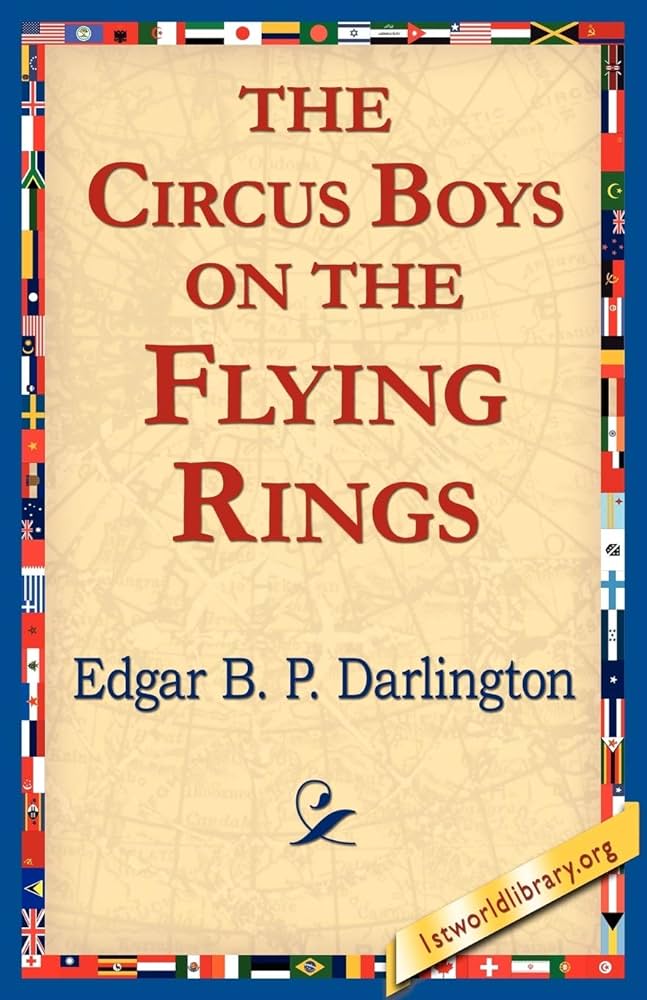Chapter I — The circus boys on the flying Rings
byChapter I introduces two boys standing at the edge of their everyday lives, peering into a world they long to enter. Phil Forrest, nearly seventeen, watches the circus billboards with eyes that have seen too much for someone so young. He has been raised under his uncle’s strict rules since losing both parents, yet a quiet fire continues to burn inside him. Teddy Tucker, a bit younger, offers comic relief and bold imagination, seeing himself as a future clown or showman with little hesitation. Their banter comes naturally, balancing Teddy’s big dreams with Phil’s thoughtful realism. The two are drawn to the world of tightropes and acrobatics, their conversation full of excitement, daydreams, and the thrill of what might be possible. For both boys, the circus is more than a show—it’s a symbol of freedom, belonging, and perhaps even reinvention.
While Teddy dreams aloud of pulling off double somersaults, Phil corrects him with a chuckle and explains the difficulty of the maneuver. There’s pride in his voice but also restraint—Phil doesn’t show off, even when he could. The posters they gaze at stir their sense of wonder but also remind them of how far they are from that world. Yet they remain undeterred. Phil speaks candidly of his uncle’s cold house and his mother’s memory, revealing a young man who clings to dignity more than comfort. Teddy, on the other hand, shrugs off rules easily and talks about sneaking into the tent. Phil pushes back gently, holding fast to his belief that doing things the right way matters, even if no one else sees. It’s clear the boys care about each other—enough to disagree honestly and still laugh moments later.
As they stroll through town, the contrast between their dreams and their current reality becomes more obvious. Muddy roads and weather-worn buildings frame their conversation, but they remain focused on a future far grander than their surroundings. Teddy, ever theatrical, tries to imitate a stunt from one of the posters. His failed attempt lands him face-first in a shallow ditch. Phil rushes to help, and instead of frustration, the moment turns into shared laughter. The physical stumble mirrors their current life—messy, unpolished, and far from the circus ring—but full of effort and good humor. They may not be soaring through the air yet, but they’re lifting each other up in different ways. That, too, is part of learning how to fly.
Their muddy clothes don’t dampen their spirits. If anything, the mishap deepens their bond. Phil talks more openly about his dreams, not for applause, but for the joy of imagining himself on the flying rings. His longing is not rooted in fame but in skill, precision, and the feeling of defying gravity with discipline. Teddy imagines becoming the ringmaster, his voice booming across the tent, commanding attention with flair. It’s a fantasy, but not without foundation. They both believe they could be more than they are. The chapter doesn’t give them a clear path, but it plants a seed: to reach something beautiful, you have to start with belief—even if you’re covered in mud.
Readers drawn to underdog stories will find this beginning both familiar and fresh. The simplicity of the boys’ world makes their hopes feel even bigger. The narrative gently sets the tone of something heartfelt—this isn’t a tale of sudden stardom but of slow, determined climb. Phil and Teddy stand not just as characters but as stand-ins for anyone chasing something just out of reach. Their choices, missteps, and laughter all serve to make them deeply relatable. This is a friendship rooted in loyalty and tested by challenges, but always strengthened by hope. As the circus nears, it feels less like a destination and more like a door—one they’re ready to knock on, together.

